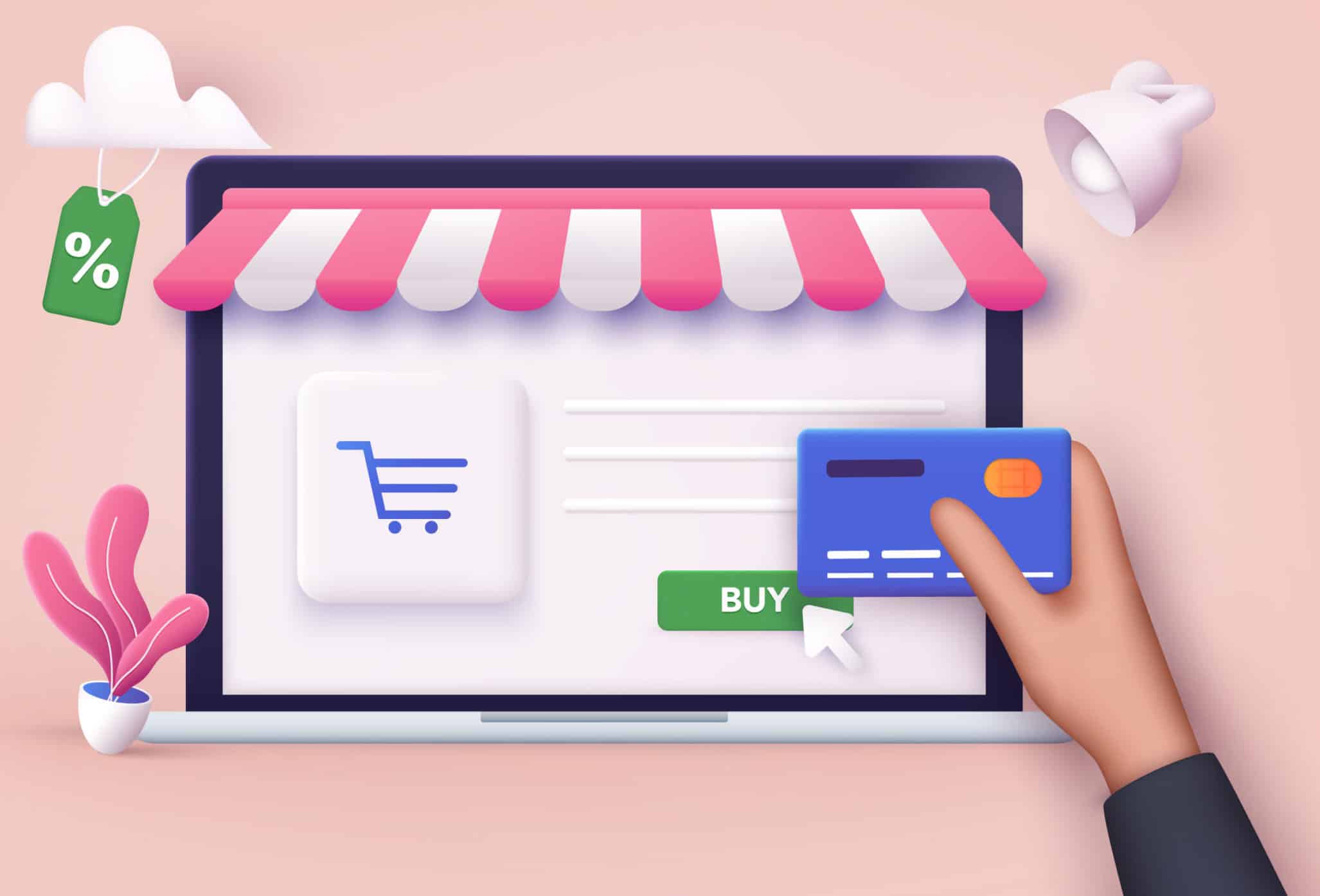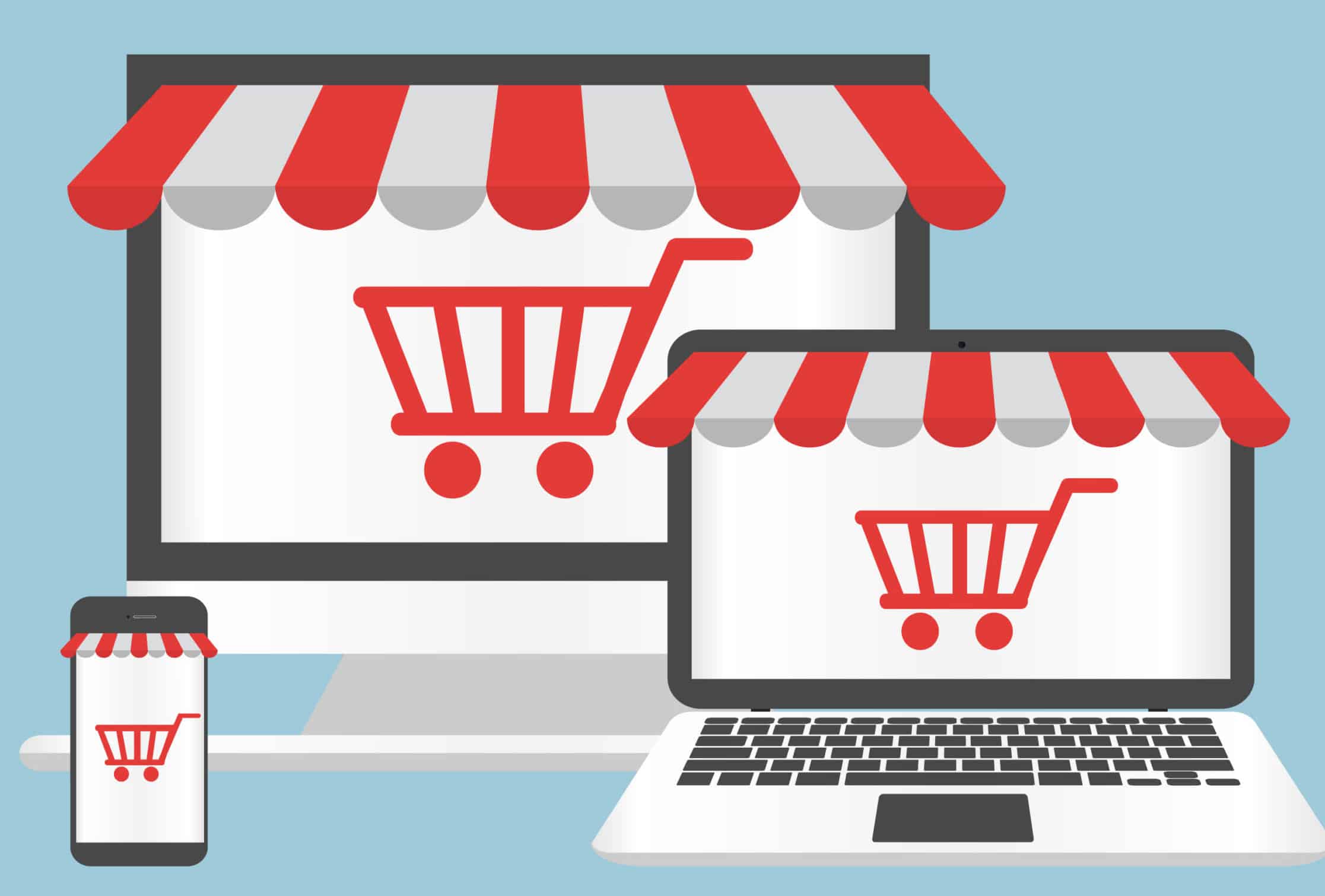So, you’re ready to start your online business journey? Well, you’ve come to the right place. In this video, I’ll be teaching you all about the different eCommerce business models so you can choose the right one for you.
Are you ready to start an online business but totally overwhelmed and confused as to which direction to go? Well, you’re not alone and that’s why we’ve created this video to help you make sense of the different types of eCommerce business models so you can figure out which one is right for you.
Ready? Let’s go!
So, when it comes to talking about business models, many people instantly think B2B or B2C (and sometimes even C2C and C2B). And while it is important to understand who you’re going to sell your products to, that’s not exactly what I’m going to be discussing today.
In this article, we’ll be discussing less about who gets your products and more about how they get them.
Ecommerce Business Models
Like many things in business, there is not a definitive list of every single way to do things. People are constantly coming up with new and innovative ways to do business online that doesn’t fit in one category or another. That said, there are six common online business models that I’m going to talk about today: dropshipping, print on demand, wholesaling, private labeling, white labeling and subscription models.
Dropshipping
So, first, let’s talk about dropshipping.
Dropshipping is, by far, the easiest way to start an online business. If you’re unsure what dropshipping is, it’s an eCommerce model whereby the retailer acts as a middleman between the supplier or manufacturer and the customer. Essentially, dropshippers never hold any inventory, so when they sell a product to a customer, they purchase it straight from the supplier who ships it direct to the customer. It’s pretty simple, actually.
Over the past few years, it has become even easier to get into dropshipping. Chinese dropshipping platform AliExpress provides an easy way for potential online business owners to find products to sell. Now, the vast majority of dropshipping products sold online today are from AliExpress because this easily accessible platform is so intuitive to use and you don’t need to pay for access like you do with many other dropshipping directories. That said, AliExpress isn’t the only place to find winning dropshipping products, but it is good for beginners to get started.
Dropshipping, and dropshipping from AliExpress in particular has become so popular that many eCommerce website builders have in-built systems to help eCommerce store owners import products quickly and easily, without much work at all. And that includes the Dashnex PowerTech Ecom Builder, which you can get a huge discount on here.
It should also be mentioned that with the dropshipping eCommerce model, there are sub-models within it that you really need to consider too. We won’t discuss that in this video but you can head to this article which tells you all about it.
Pros of Dropshipping
- Your initial investment to get started is pretty low. You don’t need to spend anything on products before you’ve sold anything.
- You can swap, change and add products whenever you feel like it. You can test products and get rid of them if they are not selling which means you’re never stuck with inventory.
- You can get up and running in lightning-fast time. In fact, if you’re wanting to get your eCommerce site up and running fast, Dashnex PowerTech may be your best option. Head to the here to find out how even the least tech-savvy entrepreneurs can build a website in a matter of hours.
Cons of Dropshipping
- You have less control over fulfillment and order times meaning you need to find a reliable supplier who ships products to your customers in a timely manner.
- You are reliant on other people’s inventory. If they run out of stock, you run out of stock!
- If you’re using AliExpress, you’ll likely experience longer shipping times, meaning your customers will experience longer shipping times.
Print on Demand
Print on demand is very similar to dropshipping but it allows eCommerce business owners to personalize and customize their products. The concept behind print on demand is that once a product is sold, a print on demand supplier custom-prints an order and ships it direct to a customer.
A great example of companies using print on demand services are t-shirt companies selling funny t-shirts. Instead of holding mountains of stock, all in different sizes and colors, the eCommerce store lists all the various options for sale on their store, which only get made once they have been purchased.
These days print-on-demand services like Printify, Printful and Gooten have a range of products that extend well beyond the humble t-shirt. From clothing to homewares and everything in between, print on demand services allow you to get a little more creative than the standard dropshipping model.
Pros of Print on Demand
- You can offer personalized merchandise which people absolutely love
- You can add new products whenever you want that are instantly available in your online store. If you’re selling t-shirts or other apparel, this can be a huge advantage as you don’t have to stock a huge range of colors and sizes.
- You don’t need to invest in your own printing equipment.
Cons of Print on Demand
- Print on demand has many of the same disadvantages as the dropshipping model, but there is one unique con that you need to watch out for. Since each item is custom-made, the fulfillment time is usually longer than with traditional dropshipping or other eCommerce models. This is actually where the customization and personalization model wins because people expect to wait longer for something they know is being made especially for them.
Manufacturing and Private Labelling
Manufacturing is a model that sees you create a product, either yourself or by an external manufacturer. For those eCommerce entrepreneurs who have a specific skill or talent and can create a product based on that, they can create an eCommerce business which sells this product for a profit. But this model won’t be for everyone because a. Not everyone is blessed with such talents and b. Unless you can sell it for a price that reflects the time you spent on it or in high volume, you won’t make any money from it! If I had a dollar for every time I said ‘I could make that…’, tried and realized it wasn’t worth it…
So, when it comes to manufacturing, the most common route that most eCommerce entrepreneurs will head down is finding a manufacturer that will help them bring their idea to life. India, China and Indonesia are really popular places to find suppliers because the cost of both materials and labour are significantly lower than in Western countries, meaning you should be able to get your product manufactured so you can sell it at a profit.
When you manufacture something, you are generally creating a private label. The products you create will have your branding both on the product and packaging. With this eCommerce business you generally must buy in bulk and warehouse your product. When a customer buys from you, unlike dropshipping, you’ll be responsible for packing and shipping the item to the customer.
Pros of Manufacturing
- You get to see your vision for your product come to life.
- You have more control over fulfillment, quality and price.
- You usually get the lower cost per unit than with dropshipping
Cons of Manufacturing
- It often requires a lot of initial investment
- You need to warehouse the product and think about fulfilment yourself
- You’re stuck with inventory if it doesn’t sell.
White Labelling
White Labelling the eCommerce business model lovechild of dropshipping and manufacturing. Just like with dropshipping, you find a winning product that is already selling well. And just like manufacturing, you brand it as your own. Depending on what the item is, you may be able to brand the product or the packaging, or sometimes both!
Unlike dropshipping though, you’ll generally need to purchase a minimum number of products to white label them, meaning you’ll also have to store, pack and ship them too.
Pros of White Labelling
- You’re selling an existing product which can potentially reduce the risks that exist with manufacturing.
- You usually get the lowest cost per unit
Cons of White Labelling
- The cons of white labelling are quite similar to the cons of manufacturing. Your entry to the market can be high (although perhaps not as high as manufacturing since you may be able to negotiate a lower minimum order quantity). You need to think about warehousing and fulfilment. And you’re stuck with inventory if you can’t sell it.
- The other con to white labelling is that although you have branded an item as your own, other people can do that too, meaning your product isn’t unique in the market.
Subscription
A hugely popular eCommerce business model is the subscription model. The concept with a subscription model is that customers pay monthly or at some other agreed interval for a product or service. This works well for software companies and eCommerce tools but it’s also a great idea for products that people want or need on a monthly basis.
The Dollar Shave Club is an awesome example of a subscription service that works. It’s also why a large number of subscription boxes have been popping up in recent years too.
Pros of Subscription
- With a subscription model, you have a predictable income which can really help with cash flow and inventory planning.
- You can build a great brand, and a good relationship with both customers and suppliers.
Cons of Subscription
- There is a risk of high churn or cancellation
- It can be difficult to maintain value. Essentially, there is a risk that subscribers will lose interest in your product or service, especially if you’re not providing a service they absolutely need.
- Making people sign up for a minimum term can deter them from buying in the first place.
So, How Do You Pick Which Business Model Works Best For You?
The biggest barrier to entry for many people when it comes to setting up an eCommerce business is money. The investment that is needed for many eCommerce business models is not something that the regular side-hustler wants to do. And let’s face it, many of us do dabble in eCommerce as a side-gig.
If you don’t want to invest in a huge stock inventory and want the flexibility of swapping and changing your products, dropshipping or print on demand may be for you.
If you have an idea for a product you’re passionate about and you are happy to invest some cash, you might want to look at manufacturing.
There are a number of reasons you’d choose one model over the other but the simple fact is, I can’t make the decision for you! It’s your job to look at your options, look at your personal and professional goals and your situation so you can make an informed decision for yourself.
So, dropshipping, print on demand, manufacturing, private labeling and subscription. Leave a comment below to tell me which you’re leaning towards and why. And don’t forget to watch the next video on how to find your niche and choose your products.
Hey guys, loved this article? Make sure you subscribe to our YouTube channel and ring the notification bell so you get all the eCommerce goodness when it comes out. And remember, if you’re looking for a platform to build your eCommerce site on, get your special Dashnex PowerTech offer here.



